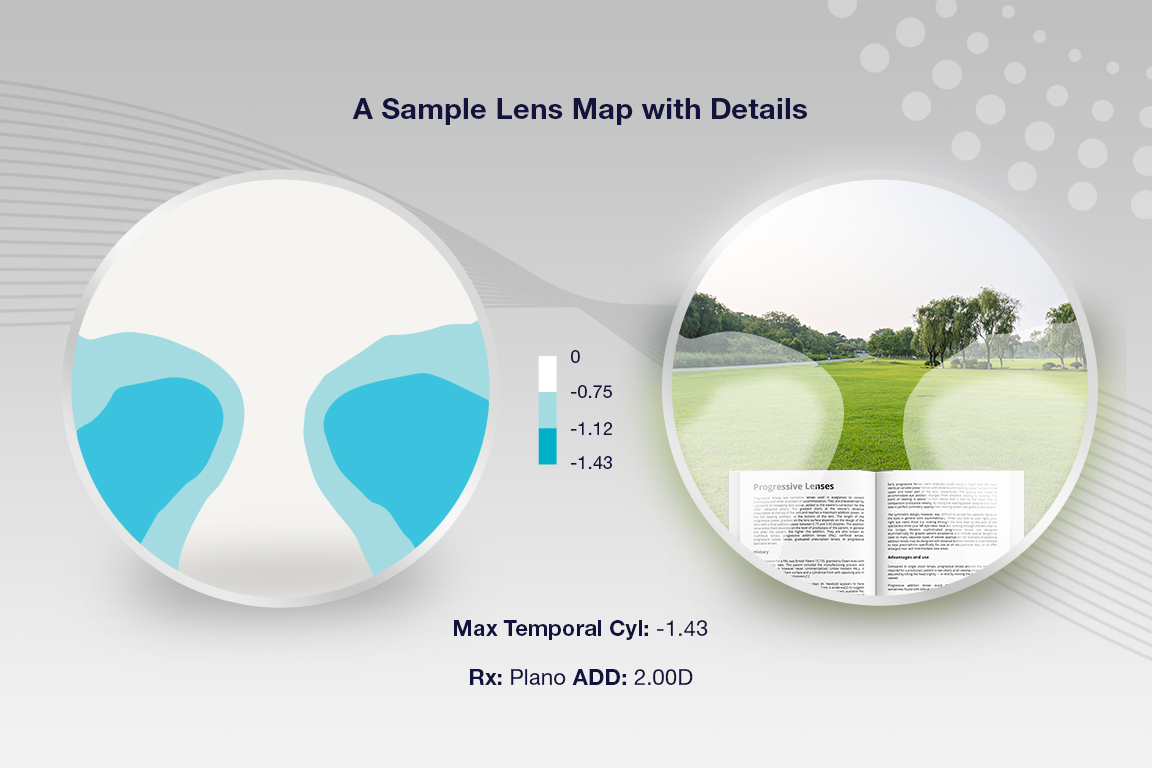Photochromatic or photochromic spectacle lenses can be a polarising topic (no pun intended). Some optometrists and optical dispensers love them. Others hate them. Similarly, some patients will depend heavily on their photochromatic glasses, while others just can’t tolerate them. As a clinician or dispenser, your role is not to just tell the patient what they should or should not do with no background or information – doing this in many areas of healthcare practice can sometimes backfire sorely. Instead, a more effective way would be to guide them through the advantages and disadvantages of photochromatic lenses, take the time to understand their needs and preferences, and then work together to decide on the best solution.
How Photochromatic Lenses Work
Many patients will refer to photochromic lenses as “transitions” or even sometimes (mistakenly) as multifocals or polarised lenses. Having a good understanding of how this technology functions enables you to explain it clearly to your patients and subsequently empowers them to later make a more educated decision about whether they believe this is a beneficial product for them.
First introduced in the 1960s, photochromic lenses are those which are treated to darken in tint when exposed to ultraviolet light. The lenses return to an untinted, clear state when removed from UV exposure.1 The photochromatic ability of the lens is not dependent on the lens material itself – the technology can be applied to various materials, including plastic, polycarb, and glass. Photochromatic lenses may also be incorporated into a multitude of lens designs, including single vision, bifocals, and multifocals. In fact, Johnson & Johnson’s VisionCare has even produced their fortnightly Oasys soft contact lenses with photochromic capability. TransitionsTM has also produced photochromic lenses that become polarised under UV exposure.
There are two processes to apply photochromic technology. In one, silver halide and chloride molecules are embedded into the lens material, remaining optically transparent until UV exposure triggers a shift in the molecular structure, resulting in a darkening of the tint. However, this process is not optimal for all lens materials. Another option allows the lens manufacturer to place the photochromic technology on the lens surface rather than infusing the photochromic dye into the lens material itself.
Many patients believe that sunglasses or photochromatic lenses provide superior UV protection, mistaking sun glare as synonymous with UV radiation. However, the reality is that untinted optical lenses can also provide adequate protection from UVA and UVB radiation, whether through properties inherent in the lens material or with routinely applied surface coatings.
In Australia, a few manufacturers offer photochromic lenses. These include:
- Sunmatic II by Opticare
- Sensity by Hoya
- PhotoFusion by Carl Zeiss
- ColorMatic by Rodenstock
- Younger Transitions Xtractive
- Younger Drivewear
- Transitions by Transitions Optical
Explaining the Pros and Cons
As with most products, photochromic lenses come with both advantages and disadvantages. For patients who have never experienced photochromic lenses before, it can be difficult for them to understand when or how the lenses might be useful (or not useful) beyond a sunny day. This is where your time and expertise come to the fore in guiding the patient to make a decision that works best for their lifestyle and personal preferences.
One of the significant advantages of photochromic lenses is their convenience; this will most likely draw most patients toward the product. We’re often all about combining multiple functions into one product – think about all-in-one cookers or robo-vacs that can vacuum and mop. Similarly, patients like the idea that they no longer need to carry around both their optical glasses and a separate pair of sunglasses.
However, this enthusiasm should be tempered with a reminder that photochromic lenses have limitations not found with sunglasses. The main one is their functionality when behind the windshield of a car. As car windshields block out much of the UV wavelengths required to activate the photochromatic technology, these lenses are known to be less effective when driving in terms of how much they darken. Though this has no bearing on UV protection for the eyes when driving (also given that the car windscreen is already blocking UV as previously mentioned), patients want glare protection from the sun when on the road. There are a couple of products by Transitions designed specifically for sun glare protection when driving. These are known as Younger Transitions XTRActive and Younger Transitions Drivewear. Both of these lenses can be activated behind the windscreen of a car, becoming polarised and darkening in response to light exposure of a slightly different wavelength.
Another advantage of photochromic lenses is that they are more cost-effective than purchasing a clear pair and a separate sunglass pair.
However, in addition to photochromic lenses not darkening when you want them to, sometimes they do darken when you don’t want them to. UV radiation is not limited to sunny days – overcast, grey, cloudy skies can still result in high UV exposure at ground level. This means when your patient is going for a hike on a cloudy day, they will be navigating uneven terrain through tinted sunglass lenses and lowered contrast sensitivity. It also means they’ll be in sunglasses when they’re posing for a photo at a wedding outdoors, whether they like it or not. Though the latter example is a matter of appearances (and what’s socially acceptable for wedding photos), the former can have more significant consequences.
Another common drawback of photochromic lenses mentioned by patients who have had them before is the time it takes to transition from dark to clear and vice versa. Though technological advances now mean that lenses can darken within a minute when going outside and rapidly clear when returning indoors, it’s not the same as simply swapping between clear glasses and sunglasses. For some patients, the time it takes for the lens tint to change is a problem. For others, they don’t even notice. Photochromic materials are also known to be temperature dependent; the ambient temperature, whether very hot or cold, can affect how well the lens darkens or lightens.
Summary
Are photochromatic lenses the best option for your patient? Photochromic lenses can be valuable for some of your patients but not for all. The decision should be made only after taking the time to discuss your patient’s lifestyle and personal preferences and how the advantages and disadvantages of this product fit in with them.
Download the Sunmatic II brochure here.
References
- WebMD. What Are Photochromic Lenses? https://www.webmd.com/eye-health/what-are-photochromic-lenses. (Accessed April 2023).
- AAO. Sunglasses with Transition Lenses: Pros and Cons. https://www.aao.org/. 2021. Avaialble at: https://www.aao.org/eye-health/glasses-contacts/pros-cons-of-transitions-lenses. (Accessed April 2023).





